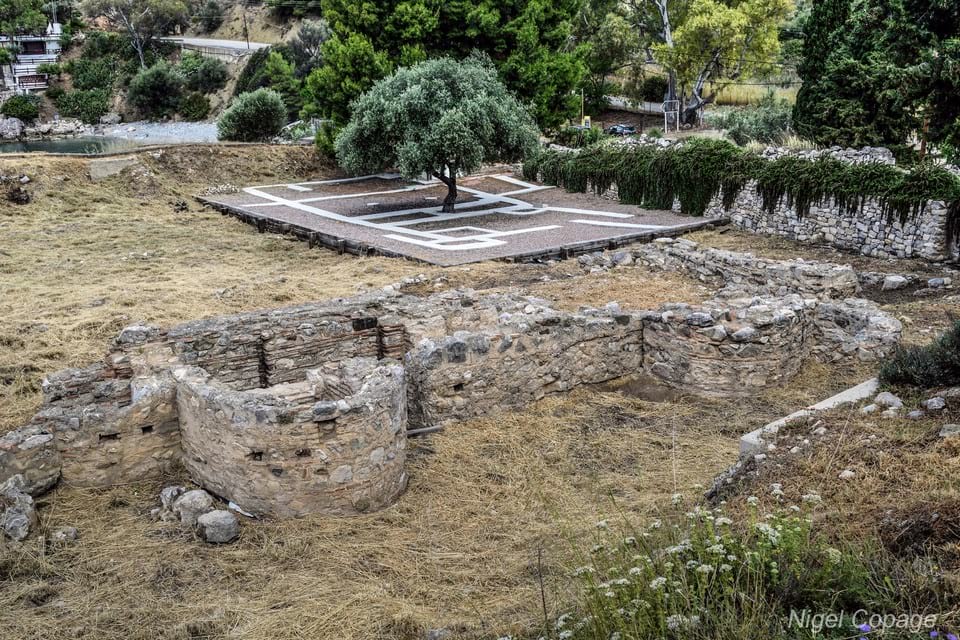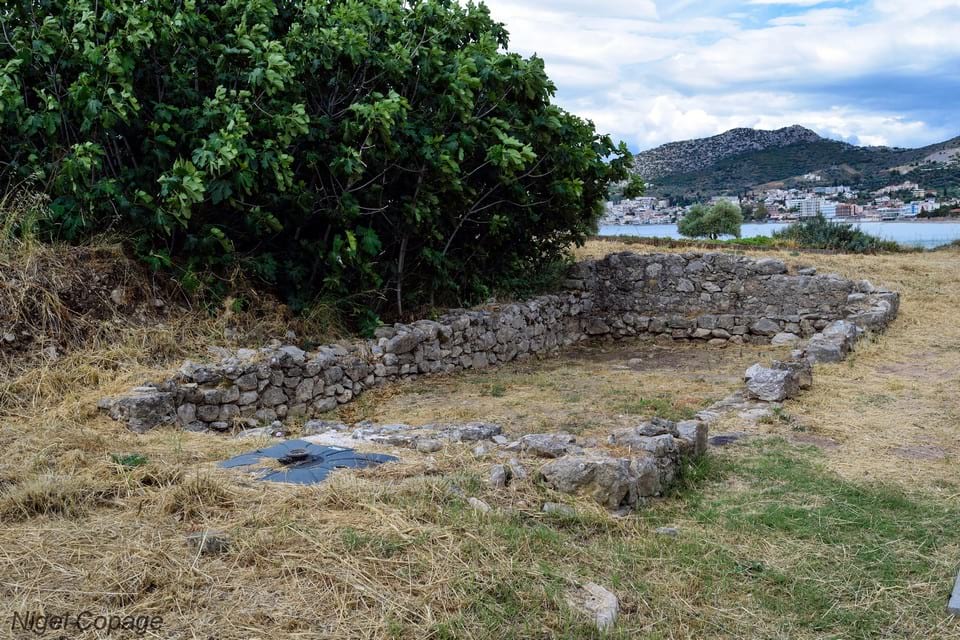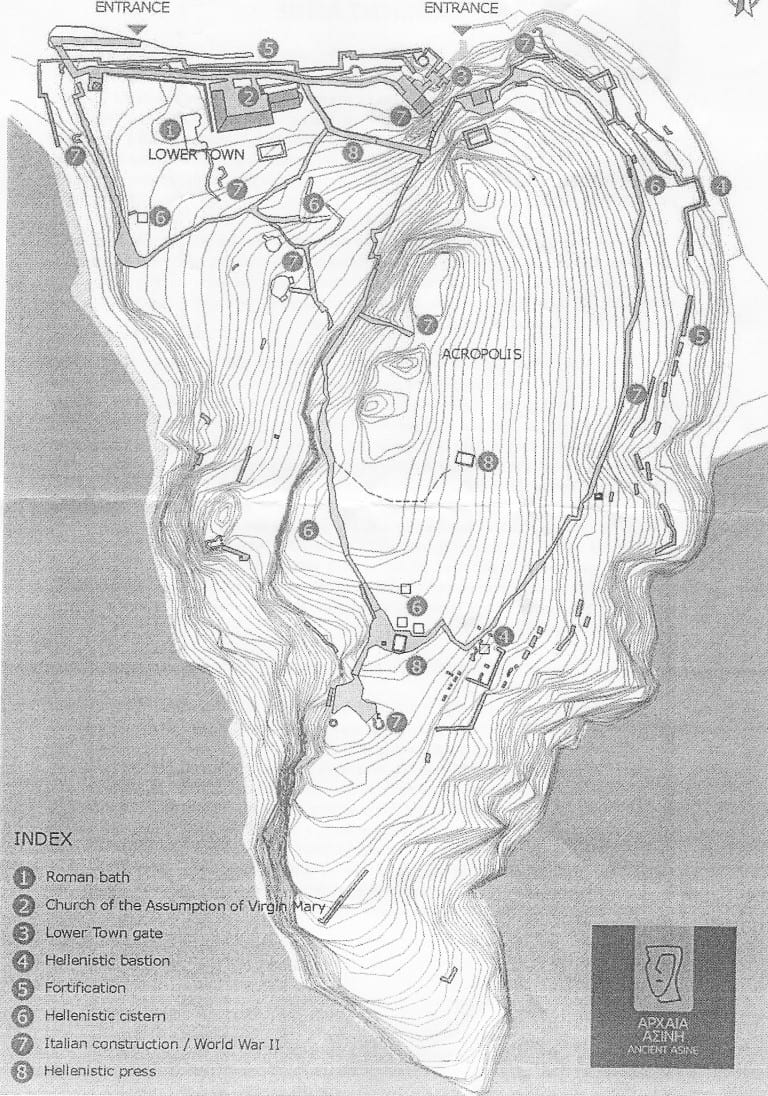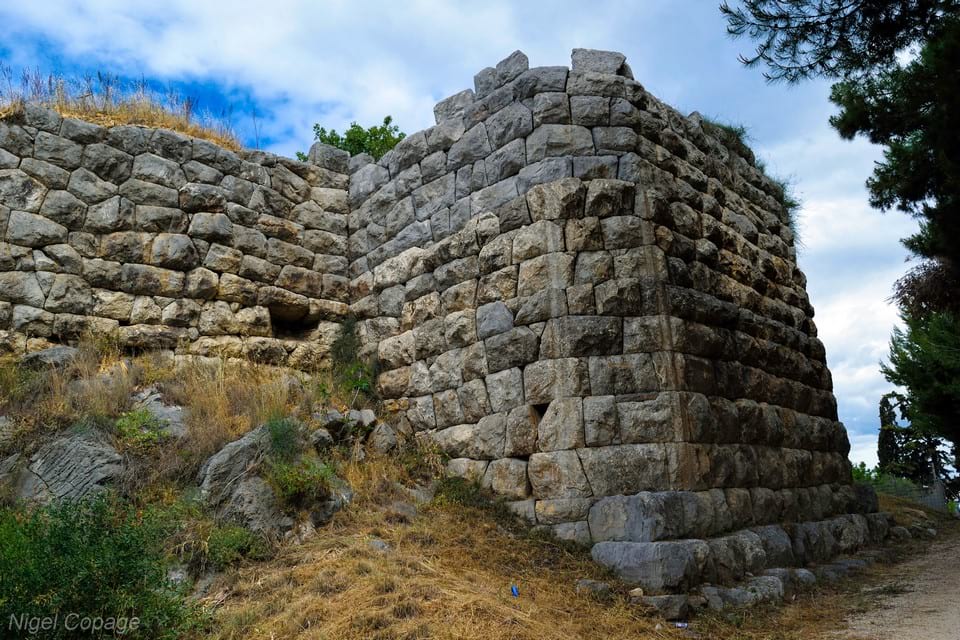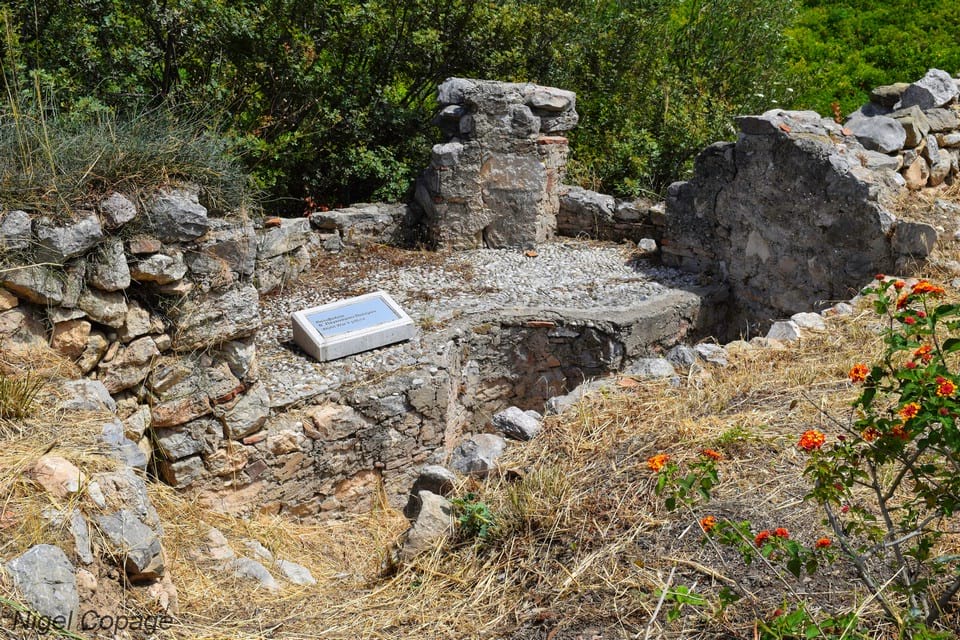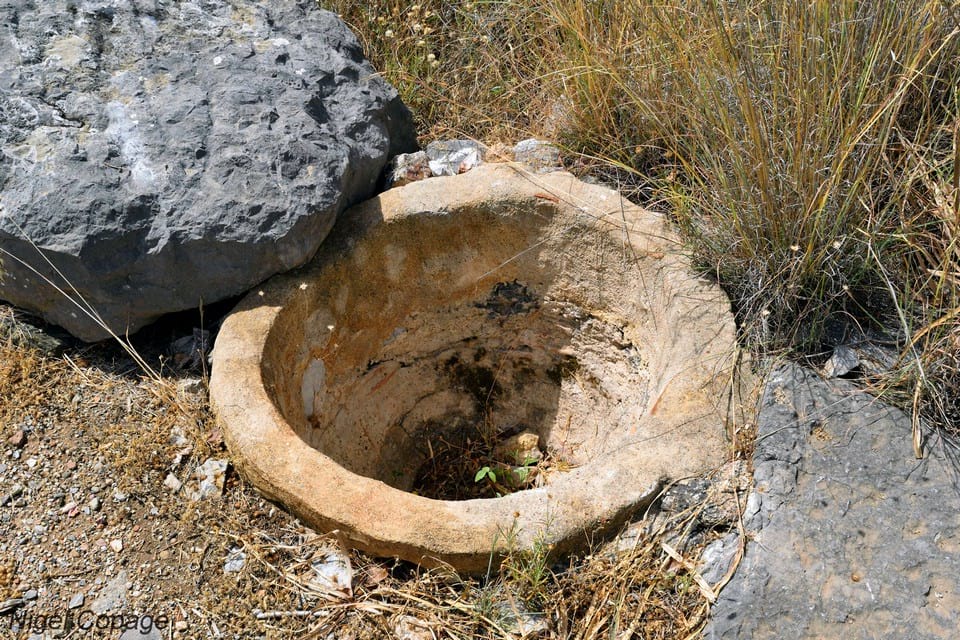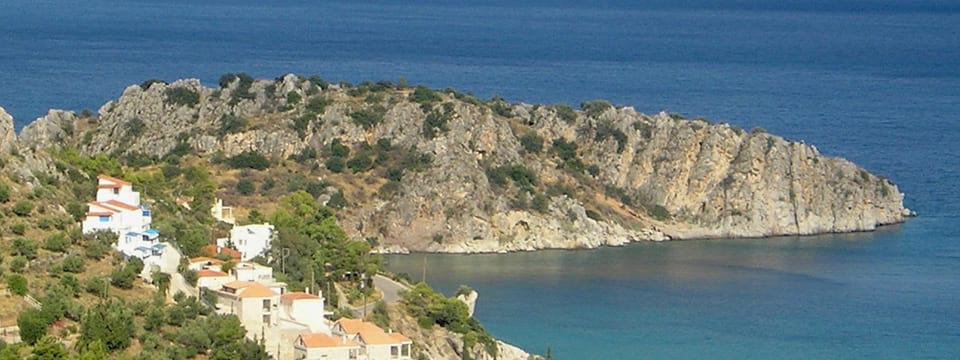
Asini has a long history which ranges from Neolithic times right up to World War II. Since the 1920s the site has undergone extensive excavations and was recently upgraded to offer improved facilities for visitors including a multi-media centre.
Mythology
The original founders are said to be the Dryopes, an ancient tribe who lived on Mount Parnassus until they were driven out by Heracles after which they settled at Asini. It is mentioned by Homer as forming part of the Kingdom of the legendary hero Diomedes, the King of Argos, and is included in the Iliad as one of the cities that sent ships to Troy.
History
The first humans in this area lived at the foot of nearby Barbouna Hill as far back as the 6th millennium BC. The rocky hill (Kastraki) on which Asini was to be built was still an island as sea levels at that time were much higher.
By the Early Bronze Age (3rd millennium BC) there was an extensive settlement with well-constructed houses at the area known as the “Lower City” at the base of Kastraki hill.
In the Mycenean era Asini was an important town. During this time the first defensive “Cyclopean” walls were built and excavations have uncovered numerous Mycenean chamber tombs and a necropolis on the slopes of Barbouna hill.
Unlike other Mycenean centres which were destroyed at the time of the Bronze Age Collapse, Asini continued to flourish throughout the Dark Ages. But in the late 8th Century BC it made the mistake of siding with the invading Spartans in their war against the Argives. When the Spartans withdrew Argos destroyed Asini and the residents were forced to flee. They-re-settled near Koroni in Messenia and founded a new town which they also called Asini.
For a while Asini went into decline but over the following four centuries it steadily grew again and by the 4th Century BC was thriving. During this time, the Hellenistic Period, the walls surrounding the Acropolis were substantially redesigned and expanded and a large bastion was built. These fortifications have withstood the test of time and are still in very good condition.
Asini continued to be occupied throughout the Roman and Byzantine periods. Excavations have uncovered Roman baths in the Lower Town which date to the 5th or 6th Century AD.
During the Second World War the Italians occupied Kastraki and used it as a base to defend against a sea invasion by the Allied forces. They built defensive trenches, look-out posts and machine-gun emplacements all of which visitors can still see today. Unfortunately the Italians also destroyed many of the ancient remains in the Lower Town which they used as building material.
Excavations
In 1920 the Crown Prince of Sweden, Gustaf Adolf, visited Greece due to his interest in archaeology. As a result of this visit the first excavations of Asini began two years later carried out by Swedish archaeologists under Axel W Persson. These continued off and on for the next 50 years and were conducted by the Swedish Institute. From 1970 work was undertaken by the Greek Archaeological Service and the Swedish Greek Archaeological Institute.
In recent years the site has undergone comprehensive upgrading. The project was EU funded and was completed in 2015. The aim was to make it more visitor-friendly. Steps and footbridges were built, information signs and seats were installed and new buildings were constructed including a ticket office/museum shop, an exhibition space and a multimedia centre. As a result, the site is well worth a visit and is highly recommended.
Click here for information on tickets, opening hours etc
Click here for a video of Asini by Philip Bekyros

